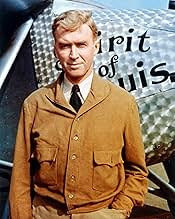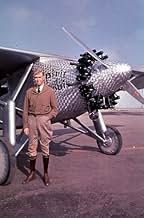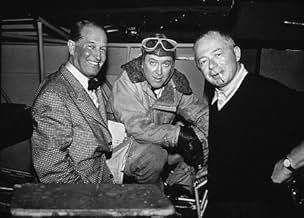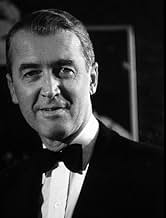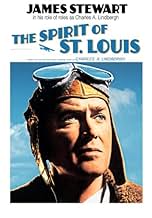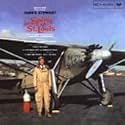Charles "Slim" Lindbergh kämpft um die Finanzierung und Konstruktion eines Flugzeugs, das seinen Flug von New York nach Paris zur ersten Solo-Transatlantiküberquerung machen soll.Charles "Slim" Lindbergh kämpft um die Finanzierung und Konstruktion eines Flugzeugs, das seinen Flug von New York nach Paris zur ersten Solo-Transatlantiküberquerung machen soll.Charles "Slim" Lindbergh kämpft um die Finanzierung und Konstruktion eines Flugzeugs, das seinen Flug von New York nach Paris zur ersten Solo-Transatlantiküberquerung machen soll.
- Für 1 Oscar nominiert
- 2 Gewinne & 1 Nominierung insgesamt
- Burt
- (Nicht genannt)
- Mother from Oklahoma
- (Nicht genannt)
- Clerk
- (Nicht genannt)
- Crowd Member in France
- (Nicht genannt)
- Crowd Member in France
- (Nicht genannt)
- Reporter
- (Nicht genannt)
- Dad - Farmer
- (Nicht genannt)
- Farm Boy
- (Nicht genannt)
- Train Passenger
- (Nicht genannt)
- Blythe
- (Nicht genannt)
- Crowd Member in France
- (Nicht genannt)
Empfohlene Bewertungen
The central problem for the film makers is the 30 hour flight, there simply wasn't enough material to depict this, the most famous episode of the whole story & the whole reason behind the legend. The use of the flashback here is entirely reasonable & to be expected as a result.
What does annoy me is the fact that he wasn't the first to fly non stop across the Atlantic. He WAS the first to fly SOLO & the first to fly non stop to Paris, but he just wasn't first to fly across the Atlantic non stop. Alcock & Brown flew across, non stop, in 1919, some 8 years before Lindnergh. Don't forget 8 years may not seem much but consider that in 8 years we went from the Mk1 Spitfire to the almost supersonic Sabre jet! Also the Vivkers Vimy bomber Alcock & Brown used was World War 1 surplus equipment, running on gasoline that had more in common with used dishwater. Yet this achievement is side stepped by Hollywood & simply ignored, yet if it was Lindbergh who'd crawled out to chip ice off the wings of his aircraft time after time we'd never have heard the end of it (a daring feat necessary because the Vimy kept accumulating too much ice to keep flying during a storm).
Useful, this film is an incomplete picture, as carefully framed in it's story line as the the impressive camera work. It does, however, continue to present a skewed view of history.
Billy Wilder adapts from Charles A. Lindbergh's Pulitzer Prize winning novel of the same name, in what is a re-creation of Lindbergh's historical 1927 solo flight. Boosted by a considerably strong lead performance from James Stewart {himself a pilot} as Lindberg, and containing an intelligent screenplay from Wilder and Wendell Mayes, Spirit Of St. Louis is a sincerely well told story.
In what at times threatens to become a monotonous film, Wilder keeps it ticking over by using flashbacks to Lindbergh's life. After the nicely told build up to the event, such as the peril being realised as Nungesser and Coli go missing {never to be found} whilst attempting the same trip in reverse, we learn stuff like how he come to buy his first plane and his work with the flying circus. This is all relative to understanding the man and his obvious passion for flying. This also helps to give us a complete picture of Lindbergh, thus putting us with him in his isolated cockpit as he undertakes this dangerous journey. Battling isolation {his only company is a fly} and chronic tiredness, it's here where Stewart perfectly portrays Lindbergh's devotion to the task. Aided by a terrific score from Franz Waxman and Academy Award nominated effects by Louis Lichtenfield, Wilder's movie turns out to be an engaging human interest story that got a thoroughly professional production. 7/10
There is a good mixture of comedy and drama throughout the film and a good use of flashbacks. It also helps that James Stewart was a pilot in real life both in the military and civilian life.
Wusstest du schon
- WissenswertesThe movie was a box office disaster when originally released in 1957, grossing less than $3 million and costing about $7 million.
- PatzerOn his approach to St. John's, Newfoundland in the fog, Lindbergh is depicted as being concerned about colliding with a mountain peak. However, there is no even remotely mountainous terrain anywhere in the vicinity of St. John's.
- Zitate
Charles Lindbergh: Did you wait in the rain all night?
Mirror Girl: Yes.
Charles Lindbergh: Are you from New York
[City]
Mirror Girl: No.
Charles Lindbergh: Long Island?
Mirror Girl: No. I'm from Philadelphia.
Charles Lindbergh: You came all the way from Philadelphia?
Mirror Girl: I had to. You needed my mirror.
- VerbindungenFeatured in Amerika im Film (1976)
- SoundtracksRio Rita
(uncredited)
Music by Harry Tierney
Lyrics by Joseph McCarthy
Played on a phonograph when Lindbergh is trying to rest before the flight
Top-Auswahl
- How long is The Spirit of St. Louis?Powered by Alexa
Details
- Erscheinungsdatum
- Herkunftsland
- Sprache
- Auch bekannt als
- The Spirit of St. Louis
- Drehorte
- Santa Maria, Kalifornien, USA(Flight Training School)
- Produktionsfirmen
- Weitere beteiligte Unternehmen bei IMDbPro anzeigen
Box Office
- Budget
- 6.000.000 $ (geschätzt)
- Laufzeit2 Stunden 15 Minuten
- Farbe
- Sound-Mix
- Seitenverhältnis
- 2.35 : 1
Zu dieser Seite beitragen



